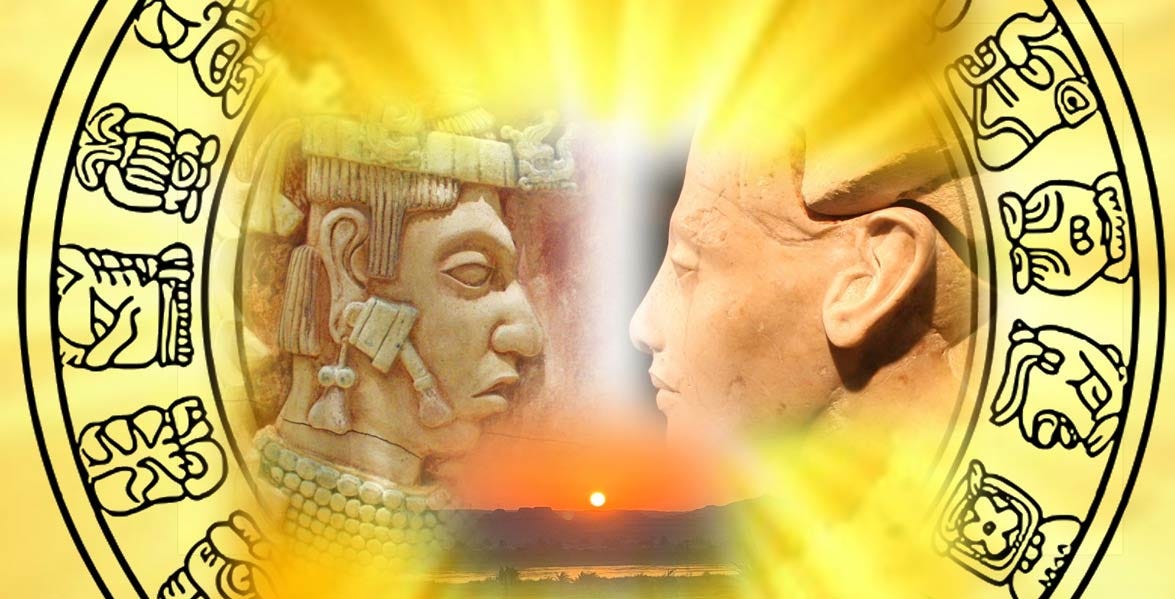The King and the Calendar: Did Akhenaten’s City Inspire Sacred Maya Timekeeping?
Akhenaten was known as Egypt’s Rebel Pharaoh. He lived during the 14th century BCE in a huge desert city he built from scratch named “Horizon of the Aten sun god” (today called Amarna). His mummy has never been found, and he disappeared from history at age 37. During his reign, he was obsessed with sunrises and worshipping the sun. He shut down the temples of all other gods, and destroyed their idols. He was called the “rebel” and the “heretic” in later Egyptian texts, and his reign was referred to as the “rebellion”. His own statues were in turn destroyed under the orders of later vengeful Pharaohs.
Meanwhile, an ocean away in Mexico, the Maya Sacred 260-day calendar is the world’s most enigmatic. Called the Tzolk’in or Cholq’ij (“counting of the days”), it is unique and unparalleled in the ancient world, and its origins are still contested. It is composed of one cycle of thirteen numbers and one of twenty day names. Could the complex religious ideas of Egypt’s first religious revolutionary have inspired a strange 260-day sacred calendar developed somewhere in the jungles of Mexico over three thousand years ago?
Jonathon Perrin is the author of five books on Amazon. His newest is Moses in Mexico (2025), available now from Amazon.





